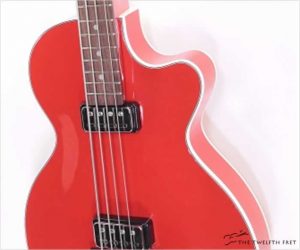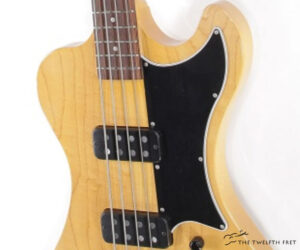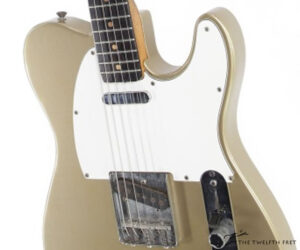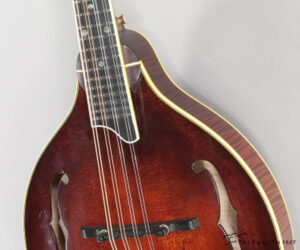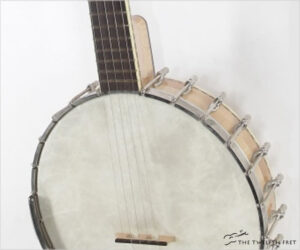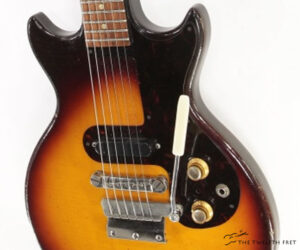Here’ s a new, old stock 2015 Hofner Gold Label Club Bass in solid red! The Club Bass is also known as the 500/2 – the 500/1 is the iconic violin shaped ‘Beatle Bass’. This is a ‘Gold Label’ model, one of a limited edition in custom colour. These models are built at the primary Hofner plant in Hagenau, Bavaria and are not always easy to find available for sale.
Instruments
The Gibson RD Artist Bass were built during 2018, revisiting the original RD Basses from 1977 to 1981. These distinctive basses draw from Gibson’s original Firebird and Thunderbird designs, but are definitely not copies. The early RD Bass line consisted of two models, the Standard, and Artist. Construction was Maple for the body and Laminated Maple for the neck, with a Maple fingerboard.
The Peghead is a small private shop next to George Furlanetto’s FBass shop. While the maple-neck Fender Telecaster was being quite successfully produced in almost its original form, by 1959 Fender wanted to widen the appeal of its instruments.
This instrument has sold
MORE →Shown here is a beautiful Michael Heiden A-29 Deluxe A-Style mandolin, built during 2003 in Chilliwack, British Columbia. Michael Heiden has been building quality instruments since the 1970’s and his work is highly respected. Originally working in Vancouver as a musician, repairman and builder, he moved to Chilliwack and since then to Creston, B.C.
Built during 2007 in Bend, Oregon, this Wildwood Troubador Natural Maple banjo sports a Tubaphone tone ring and is in great condition. The construction is Maple with an Ebony fingerboard, with rope-style decorative strips along the neck and around the rim. Wildwood Banjos were built by Mark Platen from 1973 until his retirement in 2018.
This instrument has sold
MORE →Shown here is a fairly rare guitar – an Epiphone Olympic Special, built during 1963 at the Gibson Kalamazoo plant and looking almost exactly like a single-pickup Melody Maker. This version was offered from 1963 to 1969, with a production total of around 3,000 guitars.
This instrument has sold
MORE →